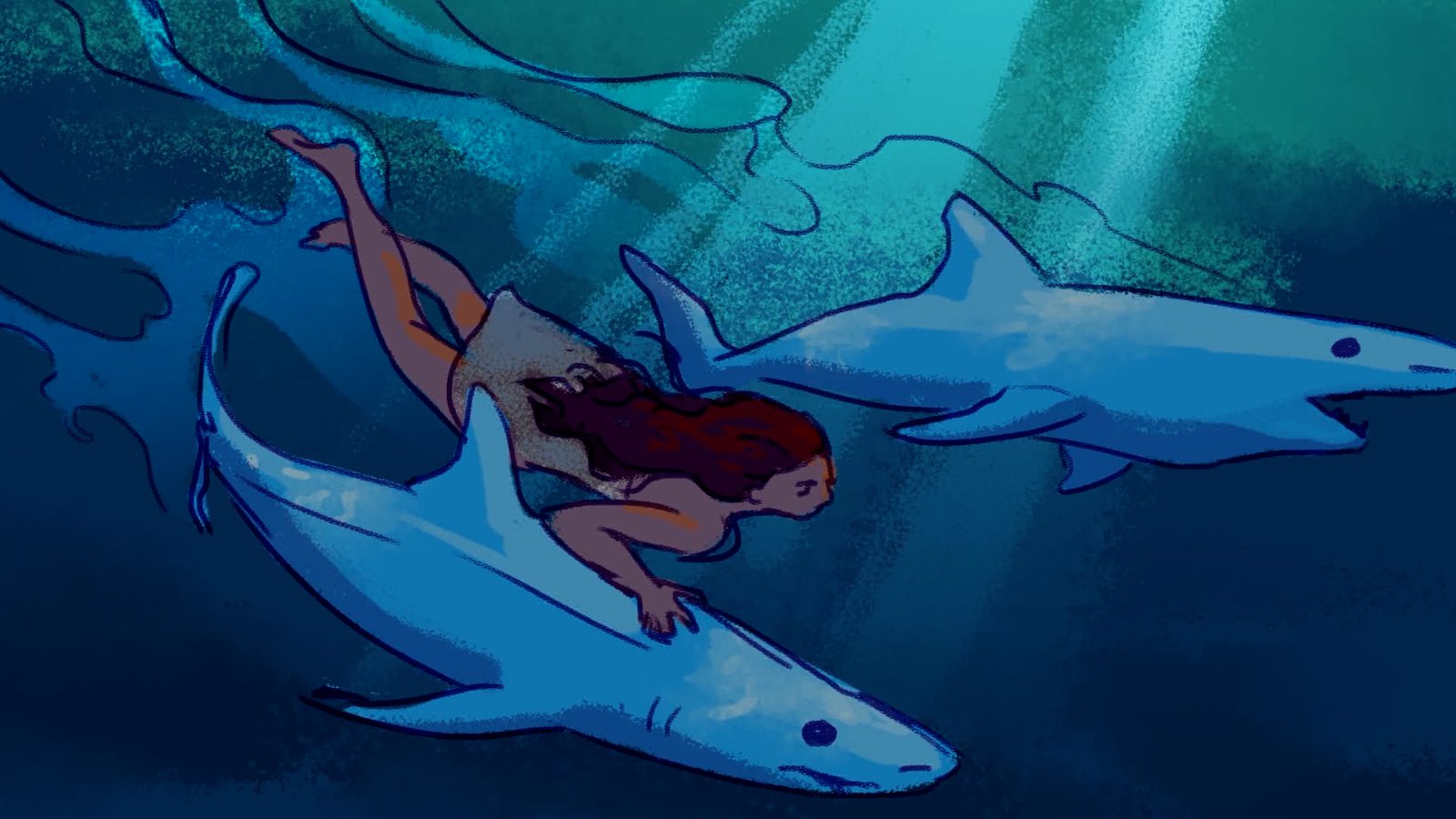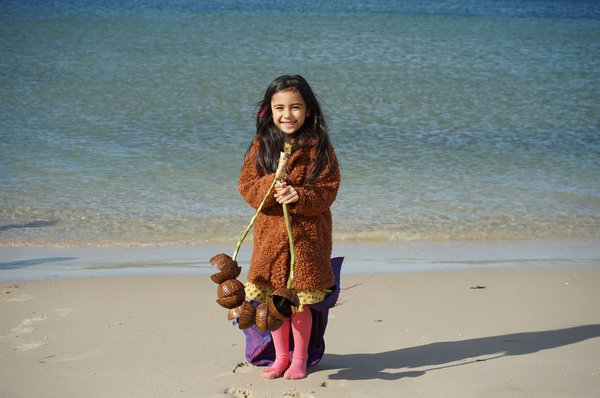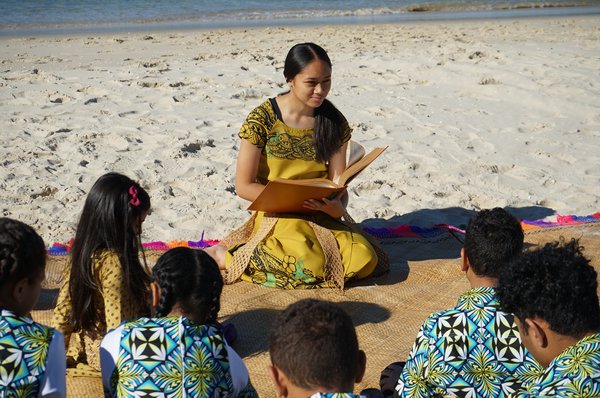Tonga
Tonga is an archipelago of more than 170 islands scattered over 700,000 square kilometres of the southern Pacific Ocean. Learn about the sacred relationship that the Tongan peoples have with sharks.


Tonga is an archipelago
Tonga is an archipelago of more than 170 islands, 36 of which are inhabited.
Scattered over 700,000km2 of the southern Pacific Ocean, the islands are divided into three groups: Vava’u, Ha’apai and the main island – Tongatapu. Most of the population lives on Tongatapu.
Sharks you might come across in Tongan waters include: Blue, Oceanic Whitetip, Silky, Mako, Thresher, Whale, Hammerhead, Bull and White Sharks.

Video Transcript
If you lose your identity and your traditional knowledge and the deep knowledge that your ancestors have passed down to you, if you actually don't pass it down, but you take an interest in this commercial commodifying of our fish we kill mercilessly then there will be no sharks. Money is not everything. You have to actually look after the environment because in the end, what's the use of money if you don't have a world to live in?
We've always had a very special relationship with shark. A sacred relationship, spiritual one, because some of our gods from old were sharks. One of the taboos is that you are not allowed to be afraid of sharks. You have to have courage. The absence of fear. If you show fear, it means that you don't trust in the god that we used to have before western God came.
You can't even throw something in the ocean. You cannot throw anything in the ocean. You're not allowed to get sick or vomit in the water. These are all the taboos with regards to the fishing of sharks, because the belief was if you do any of these you'll break the taboo and he now won't come out of the shark. And even now, in the people of Eueiki, they still believe that they will never get lost at sea because the shark will guide them home.
How to noose a shark
You have to have the manava, which is the food for the fishermen when they go out fishing, and then you have the mounu, which is the leg of pork for the sharks. You also have to have the fāngongo, which is the coconut rattle, because you actually rattled it under the water and it's like the bell that calls them to come and eat. So that's made out of coconut shells and it's usually a branch of orange tree that they actually make because it's strong and is also malleable that you can bend and then you just use it to call the sharks when they come. And the other one then is the rope, maea, maea kafa, and usually the rope is made out of coconut husks. So that is the strongest rope that we that we have for that fishing. So those are the things that you must have when you actually go out to fish.
When they go out then towards Hala Kakala, which is the reef on the eastern side of Eueiki, that's where they Tu'itufu will then say, stop here. And without anchoring that's when he'll start using then the fāngongo which is the coconut rattle and he'll call out "Wake! Hina awake, arise, come closer." So he's calling to invite Hina to come. So he'll keep on calling that while he rattled the fāngongo. And then Hina will hear this when the sharks start coming to the side of the canoes. And when they come to the sides of the canoe, that's when they actually noose the shark.
We always had a special relationship with sharks, a sacred relationship, because some of them were considered gods of the old [ancient gods].

Bull Sharks in Tonga
Bull Sharks were first seen in Tonga in 2006. Two were spotted by divers in waters off the island of Vava’u.
Later that year, a local fisherman accidentally caught a Bull Shark in a net.
At that time, the movement of these sharks in the South Pacific was unknown. Bull Sharks were known to be in waters around Fiji, but no one knew whether they swam to neighbouring islands such as Tonga.

Sharks are king
Tonga's first unified king was Taufa'ahau Tupou I. His name, Taufa'ahau, can be traced back to the connection with the shark god Taufatahi.
There are few records of Tongan people being bitten by sharks. According to Rosaline Uaniva Havea, this is because the people looked after the sharks and vice versa.
In some of the islands, they're not afraid of sharks and they're not allowed to be afraid because it's an indication of having no faith and no trust in their 'god', hence, a violation of their fishing taboo.
Sadly in Tonga we’ve adopted commercial fishing, you know, the commodification of fishing. And they also fish the sharks.

Video Transcript
A long time ago there was a beautiful lady in the island of Eueiki named Mahina. Mapu-e-kaufanga son of Ata, chief of Kolovai, heard of her wonderful beauty, and he was determined to see her.
He went forth to court her in Eueiki. They lived there for a while. Then Mapu-e-kaufanga asked Hina to turn to his family in Hihifo.
Hina agreed and asked that they take her two pet sharks with them.
They were welcomed by Chief Ata in Hihifo and Hina asked him for a place to keep her sharks Ata instructed that they be taken to the reef at the lands end of Ha'atafu and it was forbidden for anyone to enter.
Since then, the reef became known as Hakautapu the Forbidden Reef.
As time passed Mapu-e-kaufanga became interested in another lady.
This was very painful for Hina and in sadness, she called her sharks to return to Eueiki.
They started their journey along the eastern side, leaving them at a location between the town of Afa and Niutoua while she took rest at Makakula in Kolonga.
It was the usual time for the women of Chief Nuku Kolonga to come down with their hohoni vessels to the shore to fetch some seawater.
They were surprised to find Hina and they hurried back to inform Nuku of this beautiful lady they found in the beach.
Nuku instructed them to take some tapa cloth for her to wear and to bring her back. Nuku and his people welcomed her with a presentation of food, including a huge pig and the night of 'ula dance.
Hina then asked Nuku if they could return to Eueiki to visit her two fish, to Tuitufu.
The custodian chief of the land Tuitufu welcomed them and told the people to prepare a homecoming feast for their union.
Mahina gifted the two fish to the king with the decree that it was not to be speared but to noose with the rope before carrying on board.
This was the beginning of the shark fishing tradition, called the No'o'anga, the noosing of the shark.



